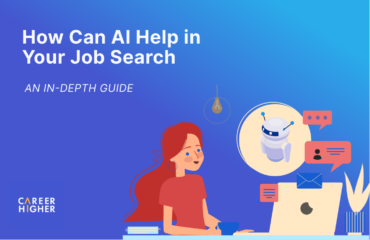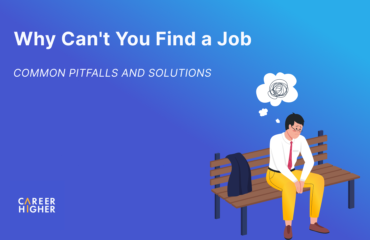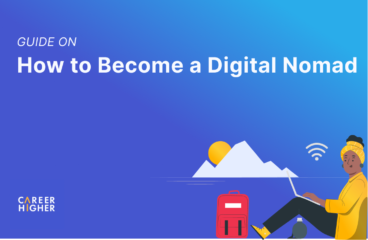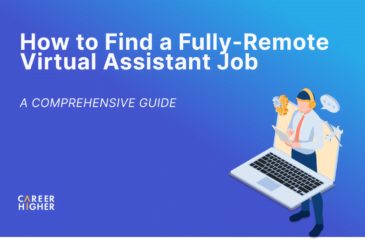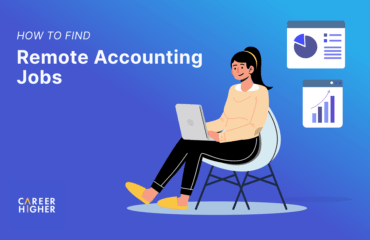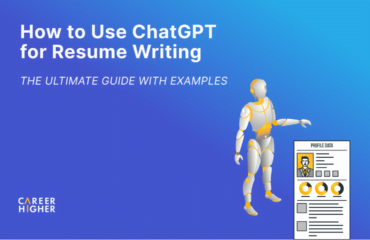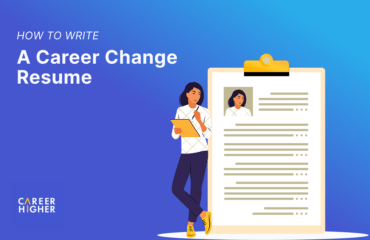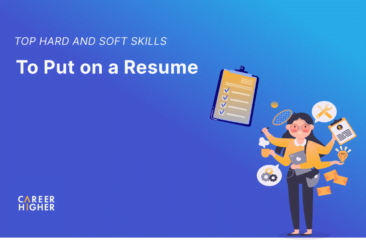Table of Contents
Your résumé remains the simplest yet most decisive part of your job search. It’s just a single document, often no more than a page or two, but those few lines summarising your professional life determine whether you’ll get an interview, meet the hiring manager, or even make it past the first screening. Getting it right matters more than ever.
In recent years, AI résumé builders have flooded the market, promising to write or optimise your résumé in minutes. Some offer free templates; others claim to generate “ATS-friendly” documents that pass automated screening systems with ease. A few even advertise field-tested designs that supposedly outperform traditional layouts.
The technology sounds appealing, but it has created new challenges. With so many AI tools available, hiring managers now receive far more applications than ever before, and they’ve become increasingly skilled at spotting AI-generated content. Many résumés look and sound identical, filled with the same phrases and lacking an authentic voice.
As a result, hiring teams have grown more selective. Research shows that 57% of hiring managers immediately reject résumés that appear AI-written. This puts job seekers in a difficult position: use AI carelessly, and your résumé blends into the crowd. Avoid it entirely, and you miss the efficiency it offers.
Our 2025 Review: Putting the Top Tools to the Test
To help you navigate the growing list of AI résumé builders, we tested seven of the most popular platforms used by job seekers in 2025. Each was evaluated for:
- Software quality and ease of use – How intuitive and functional the interface is
- Template variety and design – How flexible and modern the layouts feel
- ATS optimisation – Whether the generated résumés actually pass real applicant tracking systems
- AI content quality – How intelligent and context-aware the generated text is
- Pricing and value – How fairly features are priced relative to performance
We used each platform to build and test real résumés, reviewed third-party user feedback, and compared the quality of results against industry expectations. What follows is a detailed, data-driven look at which tools deliver, which ones fall short, and where human expertise still outperforms automation.
AI Résumé Builders Compared: Features, Pricing, and Best Use Cases
Tool | Best For | Free Plan Available | Paid Plan Pricing | Key Strengths |
TealHQ | Job seekers managing multiple applications | Yes | USD 29 /month (Teal+) | Excellent for organising applications and tracking deadlines |
Zety | Beginners seeking quick, polished résumés | 14-day trial | USD 25.90 /month or USD 71.40 /year | User-friendly editor with attractive templates |
Kickresume | Creatives and students building visual portfolios | Limited access | USD 19 /month or USD 72 /year | Bold designs, AI writing assistant, and portfolio integration |
Wobo | Structured, ATS-friendly résumés for corporate roles | Basic version | USD 24.99–53.99 /month | Integrates résumé building with job matching and analytics |
Rezi | Optimisation and ATS scoring | Basic version | USD 29 /month | Real-time keyword targeting and performance scoring |
Enhancv | Design-conscious professionals in creative roles | 7-day trial | USD 24.99 /month (lower for long-term plans) | Stylish, modern templates with deep customisation |
Jobscan | Applicants applying across multiple roles needing keyword feedback | Limited scans | USD 49.95 /month | Industry-leading keyword scanner and diagnostic tools |
Best Online Résumé Builders Compared
To help you make the best decision, we reviewed the leading online résumé builders for job seekers in 2025, evaluating them on software quality, template variety, pricing, ease of use, and keyword optimization.
We tested each platform ourselves, analyzed user reviews, and compared the quality of résumés they produced. Here’s what we found:
TealHQ
TealHQ is more than a résumé builder, it operates more like a full job search management platform. Within its dashboard, users can create, edit, and track multiple résumés for different roles while keeping applications and deadlines organised. The platform’s AI résumé assistant helps generate achievement-focused bullet points, professional summaries, and keyword-optimised content.
Pricing:
- Free plan: The free plan includes 11 résumé templates, unlimited basic features, résumé downloads, and job tracking.
- Paid plan: The premium Teal+ plan, priced at USD 29 per month, includes advanced AI analysis, additional templates, and improved keyword matching.
Pros:
- Templates are clean and professional, making them suitable for most corporate and mid-level roles.
- Imported résumés retain their original formatting, which saves time during setup.
- Real-time job description linking helps identify missing keywords and improve ATS compatibility quickly.
Cons:
- Templates, while professional, look repetitive and offer limited design flexibility.
- Spacing between sections can appear cramped; layout customisation requires the paid version.
- Keyword matching lists generic terms; bullet-point generation is based on job titles, not actual experience.
Verdict:
TealHQ is ideal for organised job seekers applying to several roles simultaneously. It helps track progress and deadlines effectively, but content generation remains basic. If you want to stand out visually or narratively, a more specialised résumé builder will serve you better.
Zety
Zety is a beginner-friendly résumé builder that focuses on helping users create visually appealing résumés through a guided step-by-step process. The platform allows users to import existing résumés or build from scratch using pre-written content suggestions based on job titles. It also includes a spell-checker, an AI summary generator, and a résumé checker that scores the overall presentation.
Pricing:
Zety offers a 14-day trial for USD 1.95, which automatically renews at USD 25.90 per month unless cancelled. The annual plan costs USD 71.40
Pros
- Templates are highly visual, with 36 layouts, 27 colour schemes, and 16 font options to choose from.
- The step-by-step editor is ideal for beginners and first-time résumé writers.
- Multiple download formats are available, including PDF, Word, and TXT.
- Built-in spell-checking and AI summary tools make résumé creation quick and straightforward.
Cons
- The platform focuses heavily on design but lacks strong keyword optimisation and ATS alignment.
- Pre-written content is generic and not tailored to specific job descriptions.
- Many templates use design elements such as columns and icons that reduce ATS readability.
- Considerable manual editing is required to make the content results-driven and relevant to specific roles.
- The trial automatically renews at a much higher rate, which can be confusing for new users.
Kickresume
Kickresume targets students, freelancers, and creative professionals seeking visually distinctive résumés. It combines an AI writing assistant with a large library of templates inspired by real résumés from employees at companies such as Google, Tesla, and Spotify.
Pricing:
- Free plan: Limited access to templates and features.
- Premium plan: USD 19/month or USD 72/year for full AI writing, cover letters, and portfolio tools.
Pros:
- Kickresume offers over forty unique templates, each designed with bold, creative layouts to help users make a strong visual impression.
- The platform provides an option to convert résumé content into a personal website, giving users an easy way to build an online presence.
- It features an integrated grammar checker and phrase suggestion tool.
- Kickresume also allows users to embed portfolios directly into their résumés, making it particularly useful for designers, writers, and artists who want to showcase their work.
Cons:
- Some of Kickresume’s multi-column designs can reduce readability and may not perform well with certain Applicant Tracking Systems (ATS).
- The platform offers limited fine-tuning options for adjusting spacing, fonts, or alignment, which can restrict customisation.
- Kickresume’s visually rich layouts can be too design-focused for traditional industries such as finance or law, where simpler formats are preferred.
Verdict:
Kickresume is a strong choice for creatives and entry-level professionals who want personality to shine through. It’s easy to use, visually striking, and practical for showcasing skills and portfolios. For purely corporate environments, however, simpler templates may perform better in ATS systems.
Wobo
Wobo functions as an AI-powered personal recruiter, with a résumé builder included as one of its key tools. The résumé builder follows a traditional, structured layout that focuses on clarity and readability rather than design flair. This format works well for corporate and technical roles, ensuring strong compatibility with Applicant Tracking Systems (ATS).
Pricing:
- Free plan: Wobo offers a free basic plan with limited functionality.
- Paid plan: They range from USD 24.99 to USD 53.99 per month and unlock AI-driven job matching, auto-apply features, and detailed résumé analytics.
Pros:
- The résumé layout is clean and professional, and compatible with the ATS.
- The ATS Optimisation Indicator helps users understand how well their résumé aligns with automated screening and highlights areas for keyword improvement.
- The tool integrates résumé building with job-matching and application-tracking features in one place.
- The interface is simple and efficient, ideal for users who prefer function over custom design.
Cons:
- Design flexibility is limited, with few template choices and minimal layout control.
- Customisation for spacing, fonts, and colours is restricted.
- Résumés can only be downloaded as PDFs, with no editable formats like Word or Google Docs available.
- The overall appearance feels basic, which may not appeal to creative professionals or design-heavy industries.
Verdict:
Wobo’s résumé builder is practical for job seekers who value structure and keyword optimization over visual design. It performs well as part of Wobo’s broader recruitment platform, helping users stay organised and efficient. However, it lacks flexibility and aesthetic variety, making it less suitable for those who want creative control or editable résumé formats.
Rezi
Rezi is an AI-powered résumé builder that puts optimisation ahead of fancy design. It offers templates and an editor, but its standout features are the AI-driven tools: a “Resume Score” that grades your résumé on multiple criteria, keyword targeting where you paste in a job description to see which skills or terms you’re missing, and real-time feedback as you build.
Pricing:
- Free plan: Rezi offers a free version with basic features.
- Paid plan: Full access comes with a monthly plan at USD 29.
Pros:
- Strong focus on ATS optimisation via keyword targeting and the scoring tools.
- Real-time content analysis helps spot common errors and improve clarity.
- The Resume Score gives immediate, structured feedback, helping you refine your résumé step by step.
- The interface is clean and functional, making it accessible even if you’re not a résumé expert.
Cons:
- Template variety is limited and there’s minimal room for visual customisation.
- While the keyword tools are helpful, real tailoring for each role still requires manual editing.
- Formatting issues sometimes appear in exported versions, especially in Word format.
- An over-emphasis on ATS optimisation can push you to focus too much on algorithms and not enough on the human reader.
Verdict:
Rezi’s strength is its data-driven approach to résumé optimization. It’s an excellent choice for job seekers who want to understand how their résumé performs against automated screening systems. But remember: ATS software is not the enemy, it’s just a filter. A résumé that passes the screen but fails to engage a human decision-maker still won’t land the job. Use Rezi as a tool for structure and compliance, not as a substitute for thoughtful, human-centred storytelling.
EnhanCv
EnhanCv is a résumé builder that focuses on design and presentation, helping users create visually striking résumés with minimal effort. It blends visual style with basic AI support, offering tools to generate summaries, bullet points, and tailored content suggestions based on job descriptions. The result is a résumé that looks polished and distinctive, making it especially appealing for creative or client-facing roles.
Pricing:
- Free plan: Enhancv offers a 7-day free trial.
- Paid plan: The Pro plan costs around USD 24.99 per month, with lower rates available for longer subscriptions.
Pros:
- Templates are stylish, modern, and highly customisable, giving users plenty of control over layout and visual identity.
- The interface is intuitive and easy to use, making résumé creation quick and accessible for beginners.
- Works well for professionals in creative, communications, and marketing roles where design impact matters.
Cons:
- Focus is more on aesthetics than effective keyword optimisation.
- Some templates use multiple columns or graphic elements that may confuse automated screening systems.
- A few users report occasional issues with export formatting and layout consistency.
Verdict:
Enhancv is best suited for professionals who want a résumé that stands out visually and communicates personal brand as much as professional history. If visual presentation is your priority, Enhancv is a solid choice. If optimisation and tailoring matter more, other tools will serve you better.
Jobscan
Jobscan is better known for its résumé scanner than its builder. The builder is basic but practical, meant for clean, ATS-friendly documents. The real strength is the scanner, which compares your résumé to a job description, highlights gaps in keywords and skills, and shows how well it matches the role.
Pricing:
- Free plan: Jobscan offers a free plan with a limited number of scans
- Paid plan: The Premium plan, priced at USD 49.95 per month, includes unlimited scans, LinkedIn profile optimisation, job-tracking tools, and cover letter support.
Pros:
- Industry-leading keyword scanner that identifies gaps between your résumé and target job descriptions.
- Provides a clear compatibility score to help improve ATS performance.
- Reliable for spotting structural issues and missing terminology in technical or specialised roles.
Cons:
- The résumé builder is basic, with limited templates and minimal design control.
- The scanner can overemphasise keyword matching, encouraging users to focus on algorithms rather than readability.
- A high Jobscan score doesn’t guarantee recruiter interest, as the tool underplays how human reviewers actually evaluate résumés.
- Manual editing is still required to make content sound natural and relevant.
- The subscription price is relatively high for what the platform offers.
Verdict:
Jobscan’s scanner is one of the best tools for understanding how ATS systems interpret your résumé. It’s particularly useful for job seekers applying to multiple roles who need to spot missing keywords fast. But optimisation isn’t everything — recruiters still care about clarity, storytelling, and relevance. Jobscan works best as a diagnostic tool: use it to sharpen your language and meet keyword requirements, but always write for the human reader.
Where AI Résumé Builders Fall Short
AI résumé builders have made professional-looking documents accessible to everyone, which is genuinely valuable. But they’ve also made most résumés sound the same. When every document follows the same formula, the ones that stand out are those that feel personal, specific, and human.
These tools rely on pattern matching. Ask them to describe a project manager’s achievements, and they’ll default to familiar lines: “Spearheaded cross-functional initiatives,” “Drove stakeholder alignment,” “Optimised team performance.” Grammatically correct and polished, but forgettable.
Most builders also focus too much on ATS optimization. The problem is, ATS software doesn’t make hiring decisions, people do. Stuffing a résumé with keywords might raise your score, but it often makes it harder to read. A strong résumé needs to pass the filter and engage the person reading it.
AI will continue to improve, but good communication still depends on judgment. Understanding what makes your story different and expressing it clearly remains a human skill.
AI vs Human Resume Writing: The Strategy That Really Works
The best strategy isn’t to let AI write your resume; it’s to let a human do that part. A good résumé writer understands nuance: how to frame your achievements, what to highlight for a specific industry, and where to let personality show. They can interpret your experience in a way software never will.
AI is better suited for scale and speed. Use it to search for openings, track applications, and adapt your documents for each role. Let it handle the repetitive work such as keyword matching, formatting, and structure.
Think of it as a division of labour. AI does the groundwork, and the human shapes the narrative. Together, they give you both efficiency and authenticity, the balance every employer values.
Want a Résumé That Actually Gets You Interviews?
AI tools can polish your formatting and keyword density, but they can’t tell your story. That’s where expert guidance makes all the difference.
At CareerHigher, our professional résumé writers combine data-driven strategy with real hiring insight. We don’t just edit words — we reframe your achievements to match how recruiters and hiring managers think. Every résumé is written by a certified writer, reviewed by a career strategist, and optimised for both ATS and human readers.
Whether you’re switching industries, aiming for a promotion, or applying abroad, a well-crafted résumé can help you stand out in the first 10 seconds. If you’re ready to upgrade from “AI-generated” to genuinely interview-winning, explore our CV & Résumé Writing Services.
The Bottom Line
AI résumé builders have made professional résumé writing faster, cheaper, and more accessible than ever. Tools like Zety simplify design, Kickresume empowers creative professionals, and Rezi sets the standard for ATS optimization. Each has its strengths, but none can replicate human judgment.
The smartest approach is hybrid. Use AI to structure, format, and optimise your résumé, but rely on human insight to tell your story with clarity and intent. A résumé that balances both precision and personality is far more likely to cut through the noise and get noticed.
As automation becomes the norm, what still stands out is individuality, the ability to communicate who you are, not just what you’ve done.


